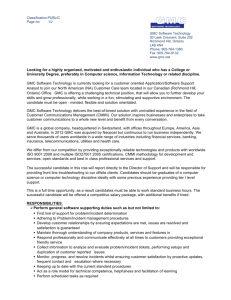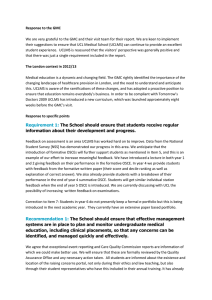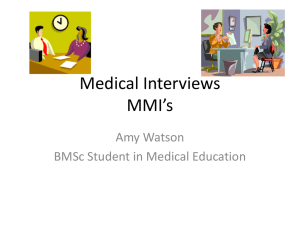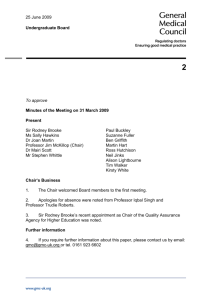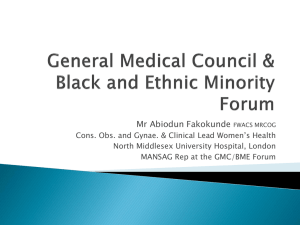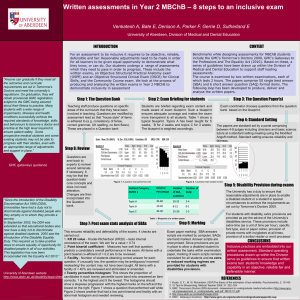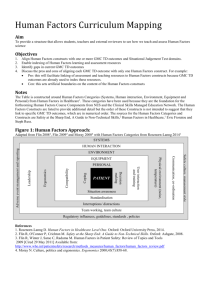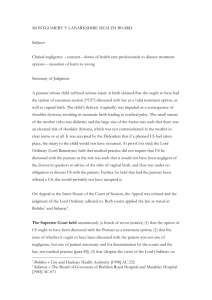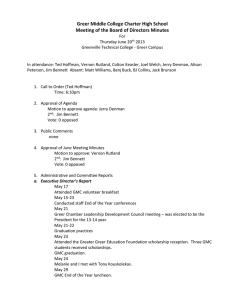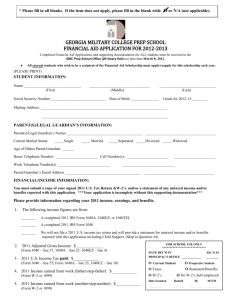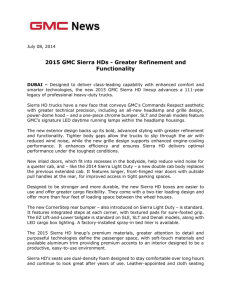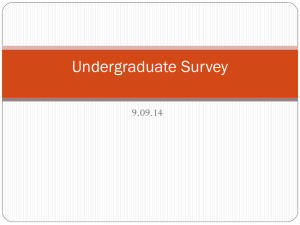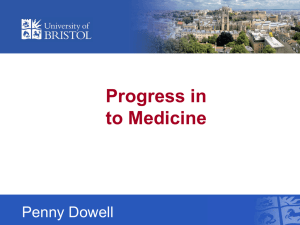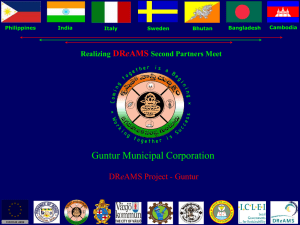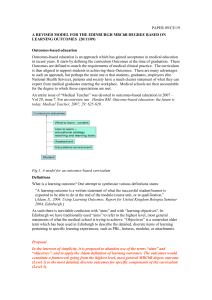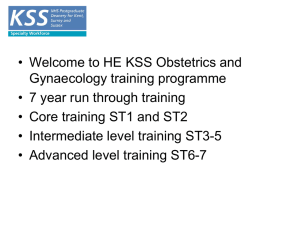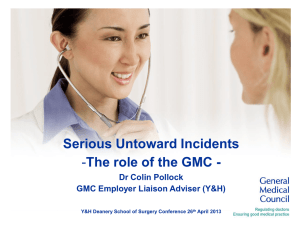Patient safety and public engagement in undergraduate
advertisement
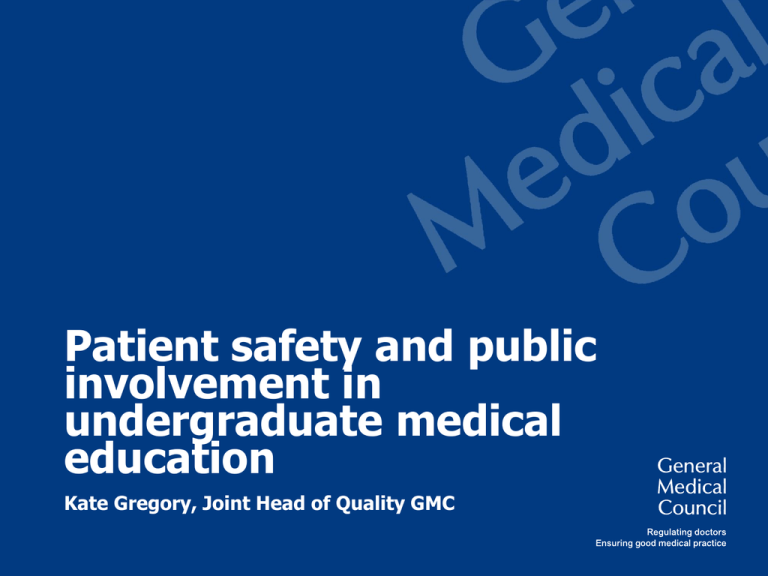
Patient safety and public involvement in undergraduate medical education Kate Gregory, Joint Head of Quality GMC Plan for the session We have 50 minutes… Any points in particular you would like covered? How is the GMC involved in undergraduate education? What does the GMC say about patient and public involvement in medical education? What do we consider to be effective practice? Questions? How we quality assure undergraduate education Quality assurance - responsibility of GMC. Overarching activity under which both quality management and quality control sit. Includes all the policies, standards, systems and processes that are in place to maintain and improve the quality of UK medical education and training. Quality management - responsibility of medical schools. Refers to the processes through which these bodies ensure that the training their medical students are receiving from local education providers (LEPs), such as NHS trusts, meets the GMC's standards. Quality control – joint responsibility of LEPs and medical schools. Ensuring that the education they are providing meets local, national and professional standards. Quality improvement framework The Quality improvement framework (QIF) sets out how the GMC quality assures (QAs) medical education and training in the UK. How this applies to undergraduate education: Approval against standards: • new institutions to deliver undergraduate medical education or the decoupling of institutions which previously jointly delivered it • medical schools are required to submit annual reports setting out their activity against the relevant standards, outcomes and requirements of Tomorrow’s Doctors. Visits: • to all medical schools and deaneries in a geographical region to make judgements about each individual organisation and to get a picture of education and training in that area • to new UK medical schools or programmes outside the UK that want to be able to award a UK PMQ. Quality improvement framework (cont) Response to concerns may be raised through a number of sources, including: • evidence arising from visits to medical schools • themes from the national trainee/trainer survey data • indicators derived from annual reports provided by medical schools • information from other bodies and stakeholders • concerns raised by trainees, trainers or others in the training community, by patients and/or the public. Shared evidence drawn from reports from medical schools, surveys, visit reports and response to concerns is used to: • identify areas of risk that warrant further investigation • triangulate evidence provided by different stakeholders and check whether it is consistent and comparable • enable us to fulfil our statutory function of approving and monitoring training through a range of evidence • identify trends and lead to thematic QA activity by the regulator, inclusion of new items in the training surveys and targeted checks. GMC standards and guidance for patient and public involvement in medical education The GMC has set standards for education and training that require patient and public involvement (PPI). • Tomorrow’s Doctors (TD) puts patients at the heart of undergraduate education and requires doctors to learn to work in partnership with patients. • The TD supplementary advice ‘Patient and public involvement in undergraduate medical education’ sets out further advice for medical schools together with examples of notable practice. • The Trainee Doctor requires deaneries active and meaningful involvement and engagement of stakeholders, including patients, in postgraduate training GMC guidance: Patient and public involvement in undergraduate medical education Patients can contribute unique and invaluable expertise to teaching, feedback and assessment of medical students, which should be encouraged and facilitated. GMC guidance: Patient and public involvement in undergraduate medical education Medical schools should ensure that a variety of innovative approaches to patient and public involvement and support is used, depending on the nature and purpose of involvement. This would ensure that different experiences and areas of expertise of the local population are utilised, including groups that are usually hard to reach. GMC guidance: Patient and public involvement in undergraduate medical education Patients or lay people should be appropriately prepared for the role they are invited to perform. Medical schools should ensure that individuals understand and are comfortable with their role, know the expected outcomes of and consent to the encounter, and know who to contact if they find it difficult to continue. GMC standards: The Trainee Doctor The deanery/LETB must ensure active and meaningful involvement and engagement of key stakeholders: trainees, trainers, patients, and the service or employer. Effective practice in patient and public involvement in medical education A large number of examples of effective practice in our supplementary guidance A few pertinent ones in the context of general practice: • Leeds Medical School: Patient Learning Journey programme and Patient Voice Group • Sheffield Medical School: Patients as Educators • St George’s: use of expert patients in teaching • Warwick Medical School: Learning from Lives Questions?
